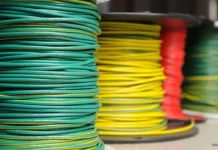Are you thinking about starting an importing and exporting business?
Launching your own exporting business can be a lucrative and exciting venture. In fact, the global import and export markets are estimated to grow into a $21,000 billion market by the end of 2022.
This shows that there is a lot of opportunity for growth and success. Unfortunately, starting a business isn’t a walk in the park. Therefore, it’s essential to do your research before you get started.
This article will discuss the basics of starting an exporting business. We will cover everything from choosing a product to setting up your shipping procedures. So if you’re ready to begin exporting, read on.
Decide What Products You Want to Export
Deciding what products you want to export is the first step in launching your business. For most people, this may seem like a daunting task. However, there are a few things you can keep in mind that will help you narrow down your options.
First, think about what products are in demand in your country. What do people want that you can provide? Second, consider what products are unique to your region.
For example, if you live in Hawaii, exporting Hawaiian coffee or macadamia nuts would be a good option because these items are not readily available in other parts of the world.
Once you’ve decided on a product, it’s time to start researching the market. Try to find out as much as you can about the potential demand for your product overseas. This will help you determine if it’s worth investing in exporting.
Set Up Your Shipping Procedures
Once you’ve decided on a product and researched the market, it’s time to set up your shipping procedures. This includes determining how you will ship your products and choosing a freight forwarder.
There are two main methods you can use when shipping your products overseas: air and ocean. Air shipping is typically more expensive but is faster. However, ocean shipping is less expensive but takes longer.
Choose the method that makes the most sense for your product and budget. Once you’ve decided on a shipping method, it’s time to find a freight forwarder.
A freight forwarder is a company that specializes in shipping goods overseas. They will handle all of the logistics for you, including customs and paperwork.
Find a reputable freight forwarder such as Sobel Network Shipping that has experience shipping to your target market.
Research the Competition
Before launching your importing and exporting business, it’s essential to research the competition. This will help you determine what you’re up against and how to position yourself in the market.
Look for other businesses that are exporting similar products to your target market. Find out as much as you can about their prices, shipping times, and customer service.
Then, use this information to create a competitive advantage for your own business. For example, if you find that most of your competitors have long shipping times, offer faster shipping times as a selling point for your business. Using your research to create a better business strategy will help you succeed in the importing and exporting business.
Create a Business Plan
One of the most essential steps in starting an importing and exporting business is creating a business plan. This document will outline your objectives, strategies, and financial projections.
Creating a business plan will help you attract investors and secure funding for your venture. It will also force you to think through every aspect of your business, from shipping to marketing.
If you’re unsure where to start, plenty of resources are available to help you create a business plan. Once you’ve made your plan, it’s time to put it into action and launch your exporting business.
Get Licensed and Registered
Before you can start exporting products, you will need to get licensed and registered with the appropriate government agencies.
Each country has different licensing and registration requirements, so it’s essential to do your research ahead of time.
In the United States, the Department of Commerce is responsible for issuing export licenses. The Food and Drug Administration (FDA) regulates food exports, while the Animal and Plant Health Inspection Service (APHIS) oversees plant exports.
Please familiarize yourself with these agencies and their regulations before starting your business. By doing so, you’ll avoid any potential legal issues down the road.
Find a Supplier
Once you’ve registered your business and created a business plan, it’s time to find a supplier.
Your supplier will be responsible for providing you with the products you need to export. It’s crucial to find a reliable supplier who can meet your needs consistently.
When choosing a supplier, ask for references and do your research. Ensure the supplier is reputable and has experience exporting to your target market.
Start Marketing Your Business
Now that you’ve got all of the logistics in place, it’s time to start marketing your importing and exporting business. The best way to get started is by creating a website and social media pages for your business. Set up an email address and make sure your contact information is easily accessible.
Then, start promoting your business to your target market. Use online and offline marketing techniques, such as search engine optimization (SEO), paid advertising, and trade shows.
The more effort you put into marketing your business, the more successful it will be. Make sure to list your products on online marketplaces and export directories. These platforms are a great way to reach potential customers around the world.
By marketing your business aggressively, you’ll be able to attract new customers and grow your business rapidly.
Start Importing and Exporting Business
Are you interested in starting your own importing and exporting business? By following these steps, you’ll be well on your way to starting a successful importing and exporting business.
Remember to do your research, create a solid business plan, and find a competitive advantage. You can make your exporting and importing business thrive with hard work and dedication.
Did you like this article? Check out other posts on our site for more informative small business tips.

































